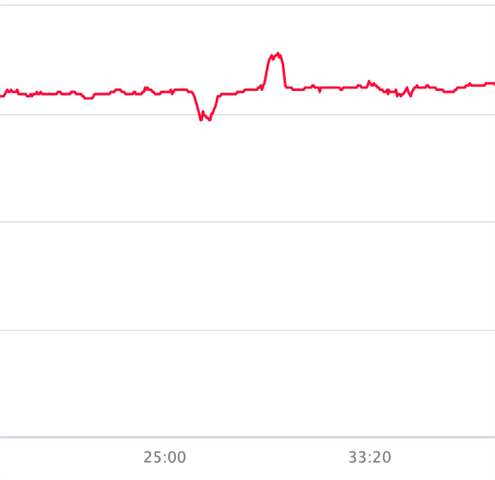I've had multiple issues with the wrist HR acting inconsistently at times. Sometimes the HR will jump up 20bpm for as long as 4 mins before settling back down. Other times, the HR will remain too low by up to 30bpm before suddenly jumping up to the correct HR. I always wear my watch on the same wrist at the same tightness. Here is an example where my HR increased and decreased by about 15bpm suddenly for about 1 min even though my pace or effort has not changed.





